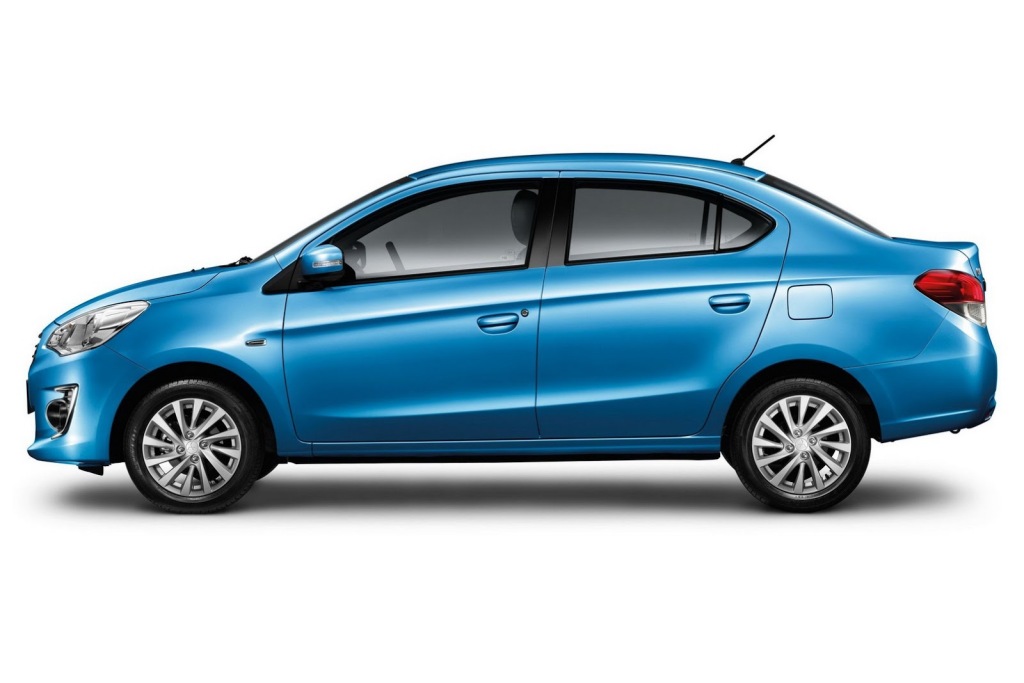Text – Chandan B Mallik; Pictures – Elvis John Ferrao
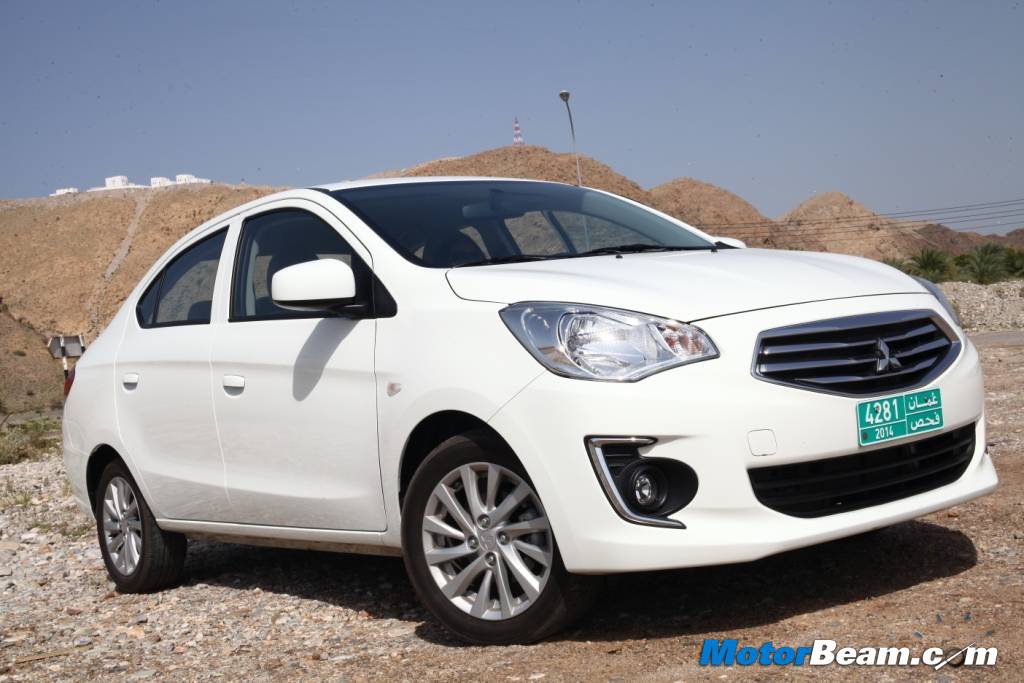
2014 Mitsubishi Attrage Review
Car Tested: 2014 Mitsubishi Attrage
Price OTR Mumbai: Rs. 8-10 lakhs (est.)
The Mitsubishi Attrage is a product which has strong potential in the Indian car market.
Mitsubishi Motors’ priorities have drastically changed over the past few years and the metamorphosis sees performance being traded for efficiency. While the carmaker still ponders what it will do with halo projects like the Evo successor, its renewed focus on smaller family cars has become clearer with the introduction of global models like the Mirage hatchback and its sibling sedan version, the Attrage. Both new models are being introduced in international markets and are based on common platform and powertrain engineering. Both cars are India bound with the Mitsubishi Attrage set for a launch next year. We get behind the wheel of this Japanese sedan to see if it can compete in the heated C-segment space.
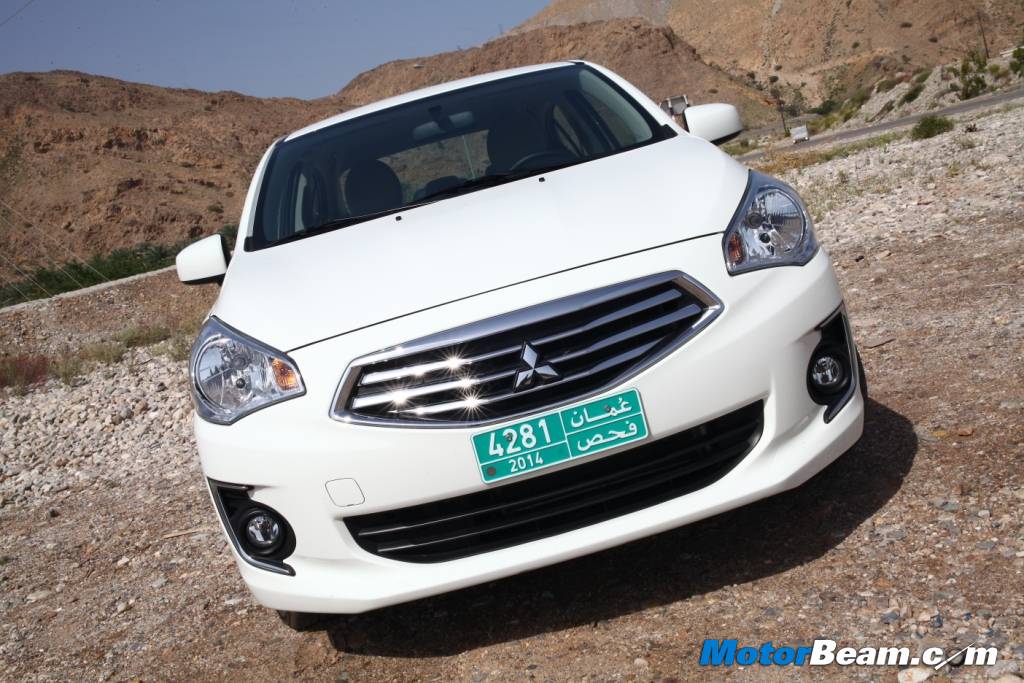
Instead of calling it the Mirage Sedan, the Attrage name is actually a combination of the words ‘attractive’ and ‘mirage’. The car was first unveiled at the Shanghai Motor Show as the G4 concept sedan. At first glance, the Attrage is clearly linked to the Mirage in design to some extent, but it does get its own distinctive feature pack. The car’s dimensions are compatible with the pack leaders in the segment and its overall profile is well balanced thanks to its 4245 mm length, 1670 mm width, 1515 mm height on a 2550 mm wheel base.
When parked side by side, the Mirage front end definitely has Japanese design flair, while the styling elements seem to be more influenced by Asian tastes in the Attrage. To begin with, the car’s redesigned nose comes with a larger chrome grille, bigger head-lights and restyled front bumper with slight over the top overhangs. The car appears cute with aero tweaked touches up front resulting in a drag coefficient of 0.29 and a bold character line which kicks up towards the rear. Mitsubishi has been able to keep the Attrage’s weight under 1000 kgs, 905 kg to be precise.
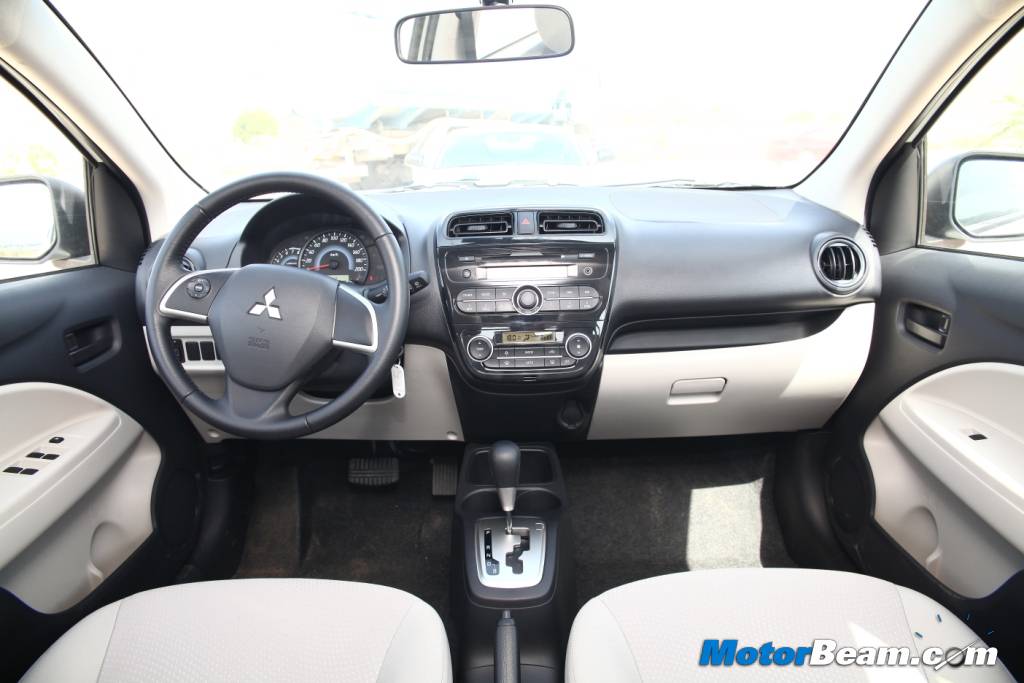
Considering the price point and positioning, the Attrage’s interior looks pretty decent in its layout but we wouldn’t say its awe inspiring. The piano black centre console is the centre of attraction and has a busy set-up. This is where the head unit and automatic air-conditioning controls are housed. We liked the simple configuration that Mitsubishi has opted for and also the large and easy to see control buttons for air-conditioning. In terms of space inside the cabin, the car takes full advantage of its 2550 mm wheelbase. Front seats are simple in design and well padded and can be adjusted manually. Front occupants also get access to usable cubby holes on the door pads.
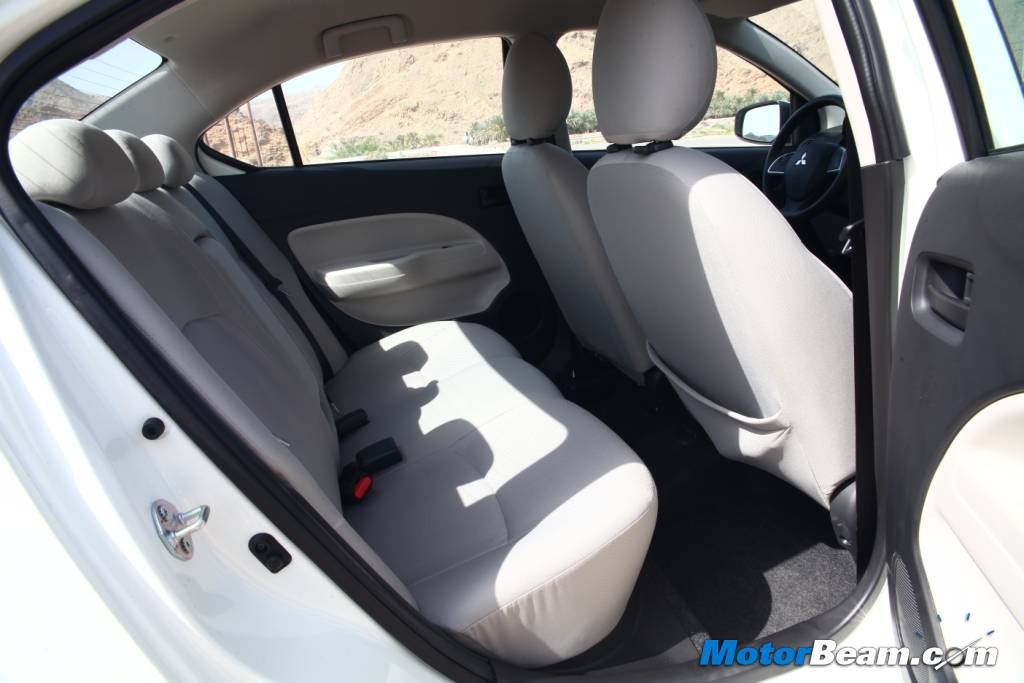
However, Mitsubishi has dropped the idea on the rear passenger doors in favour of creating accommodation for three adults without feeling uncomfortable or cramped. If there are only two occupants at the rear, you can also unfold the centre mounted armrest, sit back and enjoy the ride. Instrumentation is basic and you do get essential information from the dot matrix type display. Analogue fuel gauge is replaced by digital bars. Plastics used on the dash are hard to touch but the fabrics used elsewhere are quite upmarket by contrast. All round visibility is quite good despite the car’s slightly cab forward stance. Some of the higher trims feature Eco mode, keyless entry or push button stop start switch are not available in the entry level model. The car’s boot can take in 450-litres of cargo, or three golf bags.
As a car focused on energy saving, as expected there’s electric rack-and-pinion steering and 3A92-series 1.2-litre, 3-cylinder MIVEC unit, which offers 78 PS at 6000 RPM and 100 Nm of torque at 4000 RPM. Transmission is INVEC-III CVT and also comes with a manual engine braking feature. Keeping the Mitsubishi Attrage agile and planted on road, the suspension set-up is modern and up front you have McPherson struts and coil springs, and a torsion beam axle at the rear. Safety equipment, besides a strong body structure, also includes electronic stability control, ABS, EBD, driver and front passenger airbags.
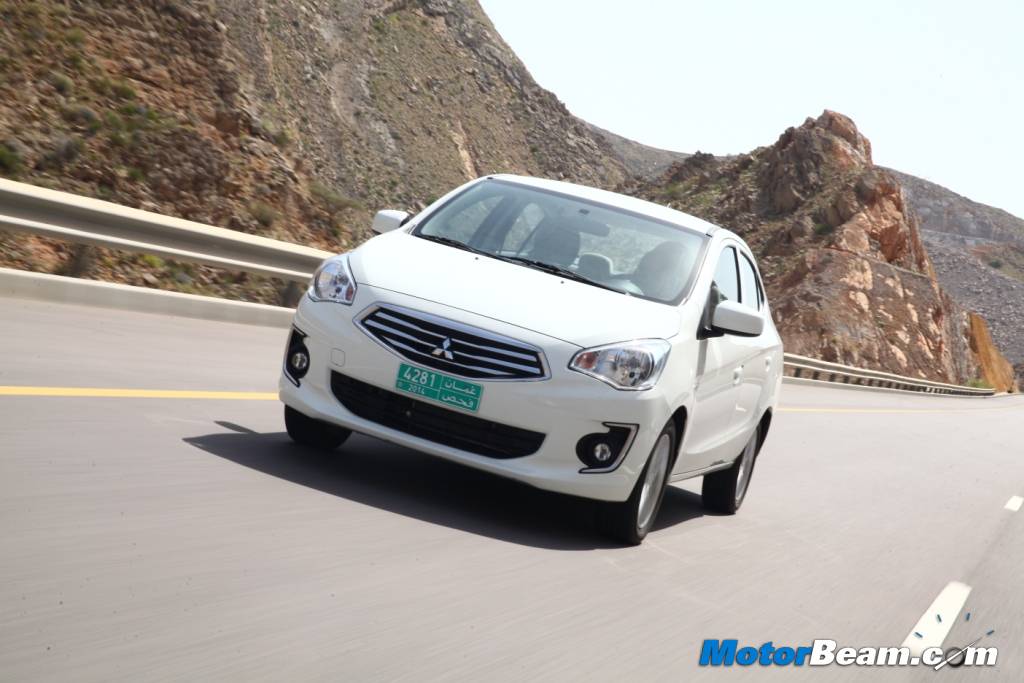
With more and more cars coming on to the market with smaller displacement engines and lesser cylinders, the attitude towards these set-ups is definitely changing. Small cars like the Attrage are nippy and zip around congested roads with utmost ease. While the Attrage is not expected to be a supermini on steriods, it does come across as a decent urban city car. The test car’s 3-cylinder MIVEC engine delivers enough torque to the front wheels via the CVT set-up and considering all parameters including driving the car with air-conditioning on full blast, we are genuinely pleased to find out that the engine’s performance is surprisingly agile for a typical everyday drive. Besides lively acceleration, it pulls pretty steadily even with full load.
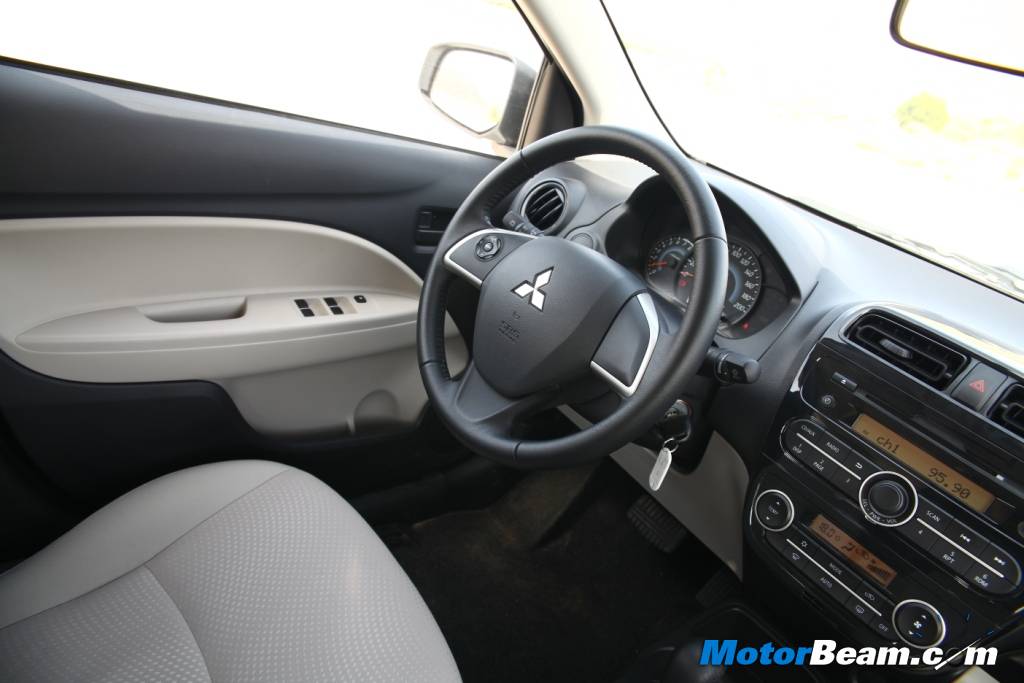
The 0-100 km/hr sprint is super smooth, thanks to the INVEC-III CVT gearbox. However, due to the nature of CVT-equipped cars, the transitions as usually felt in cogged set-ups is not there. But what is there when you observe the tachometer is that the engine rev and speed build up complement each other. At around 2000 RPM, this car will cruise comfortably all day long at 80 km/hr. Another feature in the CVT set-up is that for downhill drives it offers the driver the ability to brake the engine (equivalent of running the car in low gear) and hence avoiding over use of the brakes. To do this, the shifter has to be put in the ‘B’ slot.
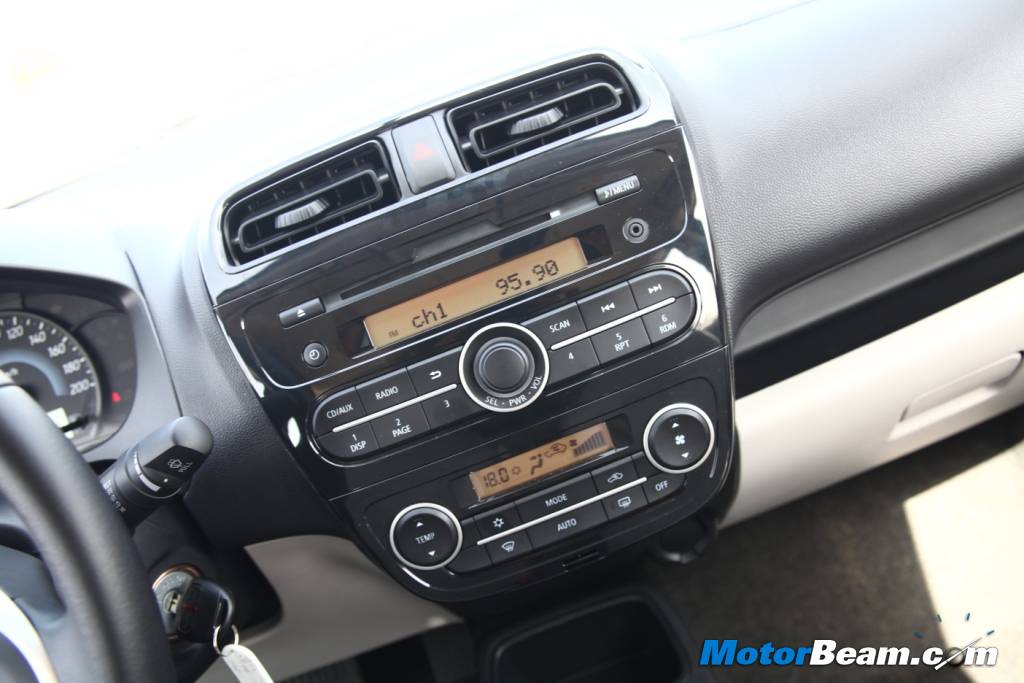
While the car’s air-conditioning is exceptional in keeping the cabin cool and occupants comfortable, the electric rack-and-pinion power assist steering’s feel is very light at low speeds, but it gets excessively heavier at higher speeds. And as expected for this type of set-up, it also feels very numb. A small flick of steering offers very little feedback and it doesn’t inspire confidence. Riding on 185/55/R15 tyres, the vehicle’s road grip was commendable and body roll very well controlled and contained. However, for the class and segment of car, the NVH of the Attrage would be described as average. The engine can be loud initially when pushed to highway speeds but settles nicely without feeling strained. But in city runs, the Attrage’s manoeuvrability is where it really excels with its short 4.6 metre turning radius, parking the car even in the tightest spot is a delight.
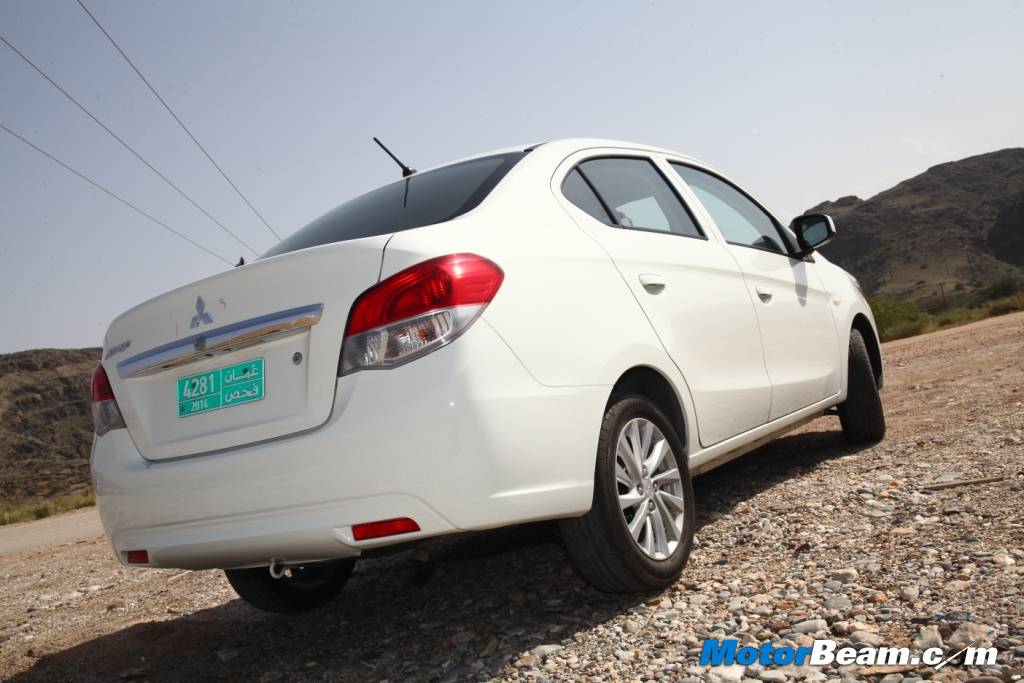
The Mitsubishi Attrage is yet another Japanese car in this high growth segment but one which stands strong in terms of quality, ease of driving, efficiency and overall appeal. Crucially though, the Attrage is a car which is important for Mitsubishi’s second innings in India, where it plans to launch 5 new models, trying to boost market share and for the first time, playing heavily in the volume segment. If the Pajero maker can get the pricing right along with engaging in good marketing and sorting out its after sales woes, the Attrage is one car which can definitely bring Mitsubishi back with a bang in the Indian market.
Mitsubishi has re-entered the booming small car segment with all value guns blazing and in markets like India, it will represent exceptional value and features for most consumers in the highly competitive C-segment.
What’s Cool
* Quality
* Dynamic balance
* Space
What’s Not So Cool
* Engine lacks outright power


